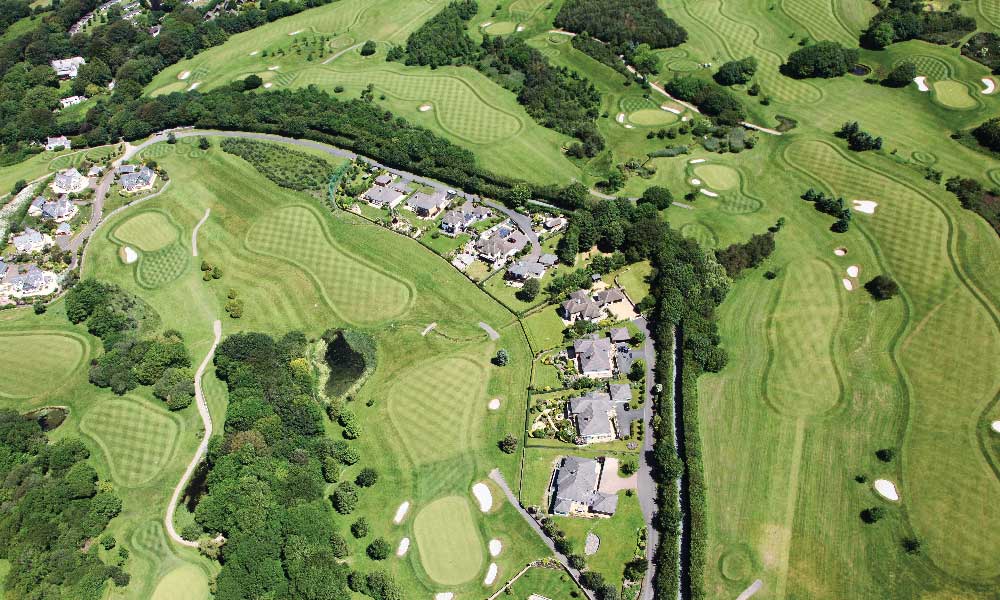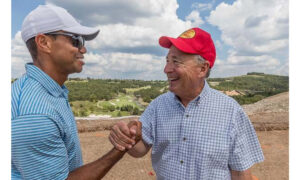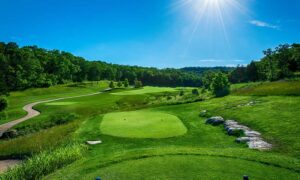Golfers flocked to the course in 2020, but not in a trickle or even a steady flow. In most parts of the country, golfers poured onto golf courses in near record-setting numbers. The National Golf Foundation estimated that 2020 saw an increase of approximately 50 million rounds of golf over the previous year.
While this surge didn’t reach 1997’s numbers when an inspiring young golfer named Tiger Woods caused annual rounds of golf to skyrocket by 63 million rounds, year-over-year, 2020 might actually have been the year of the greatest resurgence by percentage. Given the near-nationwide number of course closures in March, April and, in some locales even longer, the 2020 numbers represent only a portion of the calendar year.
And as we all rejoice over the impressive resurgence of passion for the game, don’t overlook the additional, noteworthy development that many of the eager 2020 golfers showed up at the courses, ready to make it their home. For the first time in decades, golf course communities were a hot commodity with homebuyers.
Golf Course Then and Now
As golf course superintendents are well aware, while owning a home that backed up to a golf course was highly desirable in the 1980s and 1990s, the trend stagnated and then plummeted in recent years. Declining rounds of golf inevitably led to course closings. Across the country, homeowners saw the value of their property drop by twenty-five to fifty percent when their luxury neighborhood suddenly included brown, weed-ridden fairways. What goes south faster than an abandoned golf course? …Nothing!
In many cases, developers eyed the acreage previously occupied by the course and chose to subdivide it for resale as individual residential lots or sometimes even high-density housing. Surprise! Once happy homeowners quickly soured when their luxury residences no longer backed up to the eighteenth hole but instead adjoined a multi-family housing complex.
2020, a Year Like No Other for Golf Courses
It would be easy to assume that the renewed interest in golf course communities was solely a result of the global pandemic. Certainly, closures and restrictions inspired people to get outside and enjoy more golf as one of a limited number of recreational pleasures available to them in a quarantine-driven world.
But mass numbers of people don’t sell a home and relocate during the same year simply for the opportunity to play more golf or hit more range balls. Instead, fueled by fear, frustration or a combination of the two, people across the U.S. sought short term or permanent options to reside in a “fresh air environment.”
In a December 2020 article published by the Wall Street Journal, residential real estate reporter Candace Taylor wrote an article titled “Before Covid, Golf Club Communities Were in the Rough. Now They’re Seeing Green.” Ironically, only twenty-three months earlier, Taylor had authored “Golf-Home Owners Find Themselves in a Hole,” a disheartening look at how, “younger Americans shun golf, leaving behind homeowners who paid a premium for life on the links.”
Although opposing in their positions, neither article was wrong. Certainly, the fears and restrictions associated with COVID-19, compounded by civil unrest in some urban areas, prompted many families to rethink their priorities including where they choose to call home.
In her article about the rebound of golf communities, Taylor cites multiple stories of people who sought environments that felt more insulated and less congested than their present situation, whether it was as a permanent relocation or as a getaway residence they owned and did not need to share with other vacationers or travelers.
However, even before a global pandemic rocked everyone’s world, a subtle but definite shift was underway at some golf communities. The secret, it seemed, to attracting homeowners to golf course communities was to design those communities to include more than golf.
From Golf Country Club to Lifestyle Community
Whether they are re-envisioned or purpose-built, many golf communities that offer a diversity of amenities and features in addition to golf are buzzing with activity and new residents. Carmel, California’s Santa Lucia Preserve is a thriving community built around a state-of-the-art equestrian center, a park-like nature preserve, and a Tom Fazio-designed golf course.
Cordillera Ranch in the hill country of West Texas is only twenty minutes north of San Antonio. This booming development boasts extraordinary views, serenity, Texas-sized space, equestrian trails, kayaking, tennis, and, oh yes, a spectacular Jack Nicklaus Signature designed course, The Clubs of Cordillera Ranch.
But no venue is a better example of the transition and saving grace of golf course communities than The Summit Club at Armonk. Located in Westchester County New York, the property is an ideal option for greener, cleaner living by New Yorkers who need proximity to NYC but crave a resort lifestyle in the country.
Formerly known as the Brynwood Golf & Country Club, the Summit Club at Armonk is being transformed from a traditional country club to what is described as a 21st century lifestyle community. Jeffrey Mendell, Managing Partner, described the owner experience, saying, “Members will enjoy first-class hospitality and services similar to being on a great vacation without leaving home.” He adds,
“The residential component is going to be stunning.”
Although the two- and three-bedroom private residences are being built with twenty-to-thirty-mile views, lofty ten-foot ceilings, large outdoor terraces, indoor and outdoor fireplaces and elegant finishes, the real showpiece of The Summit Club will be the Rees Jones renovated course. With a completion date of April 2021, course updates include three new holes on the back nine, the rebuilding of all fairway and greenside bunkers along with the adjustment of some bunker locations to give players additional shot options, reshaping of several greens complexes to create new greenside chipping areas, plus the reshaping of a number of landing zones on a few holes to improve their playability.
Upon completion, The Summit Club at Armonk course will play to 6,700 yards from the back tees with a par of 71. The golf range and suite of practice facilities also are being upgraded. Golf Architect Rees Jones said,
“The extensive golf course improvements will make The Summit Club at Armonk a place that all levels of golfers can enjoy in a natural landscape that offers dramatic elevation changes and stunning panoramic views of the New York countryside.”
To ensure every detail of the golf experience is optimal, a fleet of new golf carts will include most-current GPS technology, onboard coolers, Bluetooth speakers and USB ports. On the horizon is the addition of a golf performance center with indoor and outdoor hitting bays on the range and comfort stations with drinks and snacks.
More than a COVID-19 Response
Whether owners at The Summit Club at Armonk live there on short-term reprieves from the stress of the city or make the 156 acres of picturesque woodlands their year-round home, they will achieve what so many Americans are seeking, a mentally and physically safe and serene environment. Although the global pandemic, economic uncertainty and political and social unrest of 2020 certainly pushed this desire to live a safer lifestyle to the forefront, people were already headed in that direction.
Golf communities redefined as lifestyle communities are attracting new homebuyers eager for post-pandemic peace-of-mind. Likewise, golf course superintendents who embrace and enhance their facility’s expanded offerings will find they gain their own peace of mind in the form of fortified job security at a course where a new wave of resident golfers help keep rounds of golf thriving.
Linda Parker has been writing professionally since the 1980s. With clients in finance, sports, technology, change enablement, resorts and nonprofit global initiatives, Linda helps organizations communicate their stories in meaningful ways to the people they most want to reach. She has authored, ghostwritten or contributed to more than a dozen nonfiction books. Linda is a member of the Authors Guild and the Golf Writers Association of America. You can connect with her at linda@glindacreative.com



























